
Must-see Historical Landmarks Across Canada
Whether you’re a real history buff or looking to learn more about Canada’s past, there’s no better place to start than a visit to these historical landmarks. Like a living time capsule, each site provides unique insights into the different heritage, cultures and stories that make up Canadian history. From archeological sites to century-old markets, here’s our guide to the must-see historical landmarks in each province.
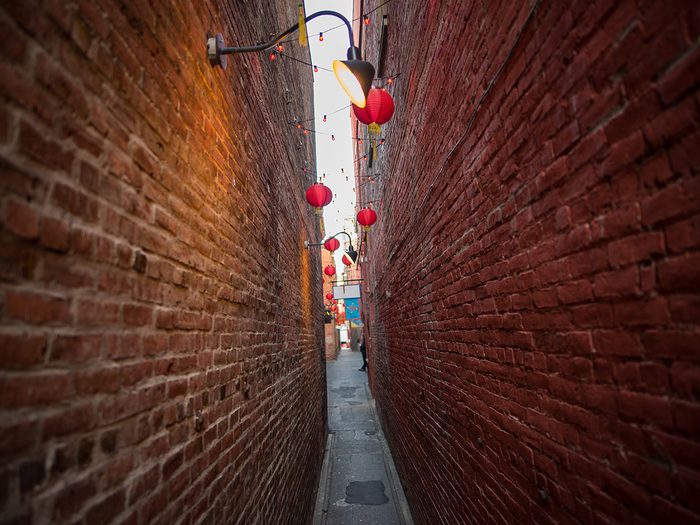
Chinatown and Fan Tan Alley
Victoria, British Columbia
Your first stop in B.C.’s capital should be a stroll through Victoria’s Chinatown, the country’s oldest surviving Chinatown and one of the few in North America where the original buildings are still standing. From the late 1850s into the 1880s, it was a major entry port for thousands of Chinese immigrants who sought work in gold mines and building the Canadian Pacific Railway. Once home to the largest Chinese settlement in Canada, the neighbourhood was designated a National Historic Site in 1995 for its importance in Chinese-Canadian heritage. Today, its distinctive layout of alleys and passageways—including Fan Tan Alley, the narrowest street in the country—continues to be a key part of the community.
Pro tip: At 38 feet tall and flanked by two hand-carved stone lions, you won’t miss the Gate of Harmonious Interest at the entrance of Chinatown. The awe-inspiring structure was erected in 1981 to commemorate the district’s revitalization and bears the inscriptions “to work together with one heart” and “to help each other achieve harmony.”
Discover more essential things to do on Vancouver Island.
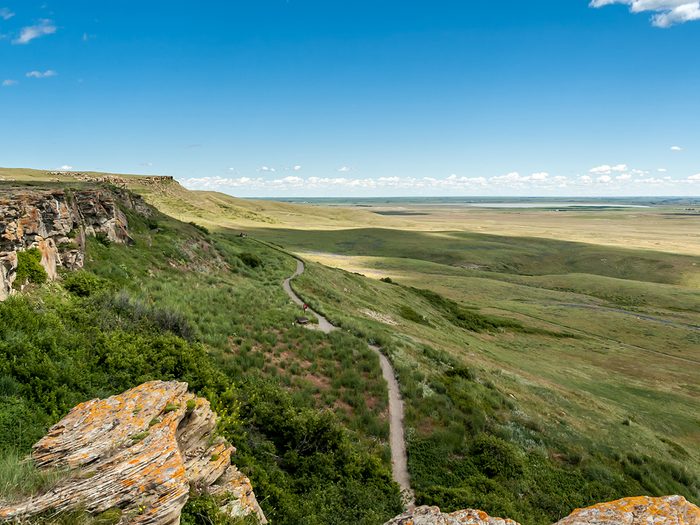
Head-Smashed-In Buffalo Jump
Fort MacLeod, Alberta
As one of only 20 UNESCO-designated World Heritage Sites in Canada, the Head-Smashed-In Buffalo Jump—estipah-skikikini-kots in Blackfoot—is a bucket-list destination for its breathtaking natural environment, as well as its historical and archeological significance. For thousands of years, Indigenous peoples of North America’s Great Plains used these cliffs to hunt bison for sustenance. This communal hunting technique brought the herds stampeding over the jump, then butchered at the bottom for food, clothing and shelter. Discover one of the best preserved and most extensive historical landmarks in the world, with an estimated 20 to 40 million buffalo bones and 100,000 stone weapon tips.
Pro tip: Head to the Interpretive Centre to learn more about the cliffs through exhibits and programming that recounts over 6,000 years of Plains Buffalo culture.
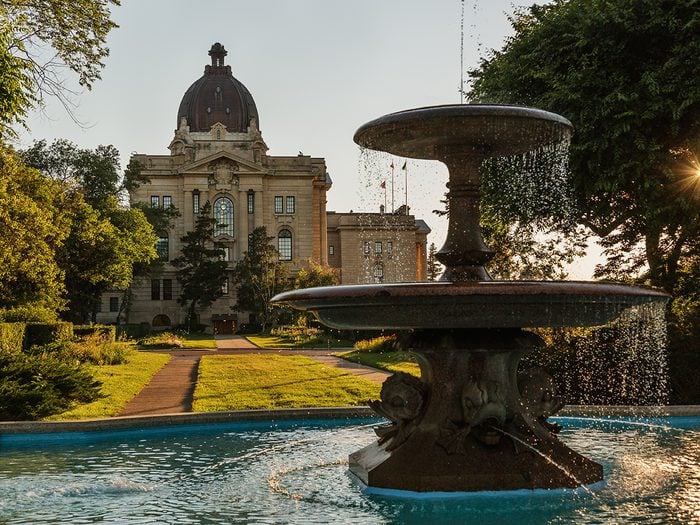
Saskatchewan Legislative Building
Regina, Saskatchewan
Located in Regina, the Saskatchewan Legislative Building is one of the province’s must-see historical landmarks for both its grand exteriors and the glimpse it provides of the inner workings of Canadian politics. Built from 1908 to 1912 by Montreal architectural firm E. & W.S. Maxwell—one of Canada’s largest and most influential at the time—the monumental structure is a blend of different European architectural styles. Take a closer look at the symmetrical façade and you’ll find elements of English Renaissance inspired by St. Paul’s Cathedral in London mixed with the French Beaux-Arts tradition à la the Palace of Versailles and Les Invalides in Paris. An embodiment of the ambition of the province and its people, the building and its grounds was designated a National Historic Site in 2005.
Pro tip: Give yourself 45 minutes for a self-guided outdoor walking tour around the building and surrounding Wascana Park. The accessible route is a history lesson brought to life, passing by landmarks like the Queen Elizabeth II Garden (complete with a statue of the late monarch atop her favourite horse, Burmese—a gift from Saskatchewan) and one of two Trafalgar Fountains in country—the same ones that once decorated London’s Trafalgar Square from 1836 to 1939.
Take a look back at the most memorable royal tours of Canada.
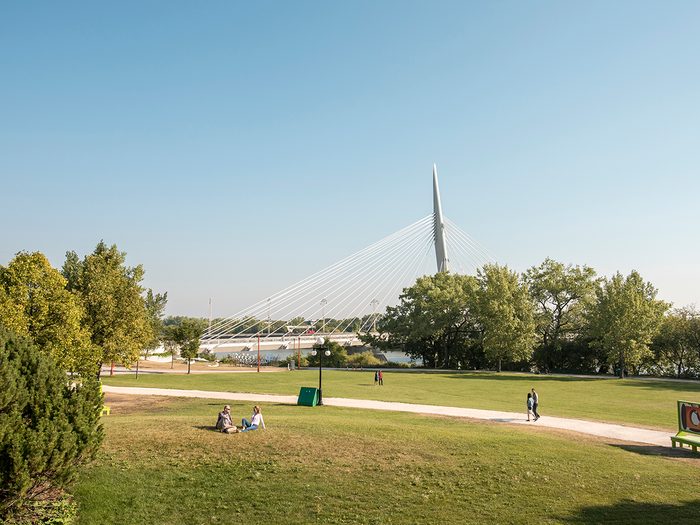
The Forks National Historic Site
Winnipeg, Manitoba
At the juncture of the Red and Assiniboine Rivers in the heart of Winnipeg is The Forks National Historic Site, an area that has witnessed more than 6,000 years of Canadian history. With the two rivers as major transportation corridors, The Forks was a meeting and trading point for different First Nations groups, in addition to being a fishing camp and settlement. In the 19th and early 20th centuries, it set the stage for expansion into western Canada as the site of trade forts, a Hudson’s Bay reserve and a major railway yard. In present day, The Forks is just as bustling with plenty of attractions to explore.
Pro tip: Museum-lovers are in for a treat with three within walking distance of the site including the Winnipeg Railway Museum, Manitoba Children’s Museum and the Canadian Museum of Human Rights.
Discover 20 mind-blowing things you’ll find in Canadian museums.
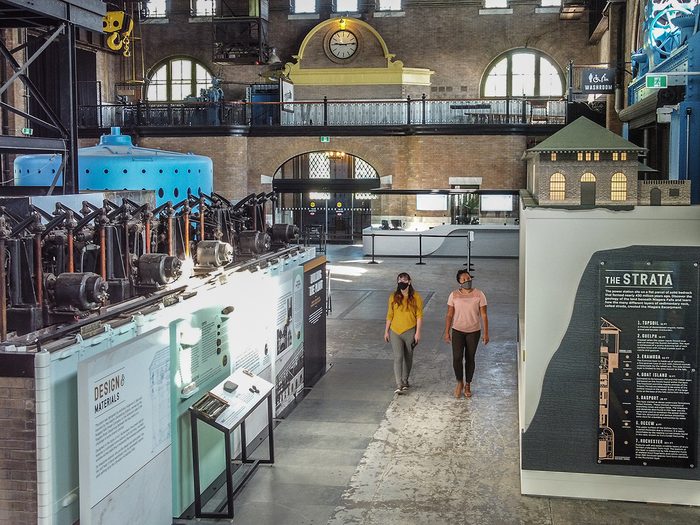
Niagara Parks Power Station
Niagara Falls, Ontario
The Niagara Parks Power Station is an immersive and interactive experience in the first major power plant on the Canadian side of the Niagara River. Learn the science behind hydro power through restored artifacts while admiring the stunning interior features like the Romanesque-style rounded window arches and water-filled forecourt. The original facility was completed in 1905 to tap the power of the famous Horseshoe Falls for hydroelectricity that was used to service Fort Erie and Buffalo. The plant was decommissioned in 2006, but reopened its doors in 2021 thanks to a multi-million-dollar redevelopment.
Pro tip: Nighttime visitors are treated to a multi-sensory sight and sound show inside the transformed plant, featuring theatrical storytelling complete with animations and a musical score.
Discover more unique things to do in Niagara Falls.
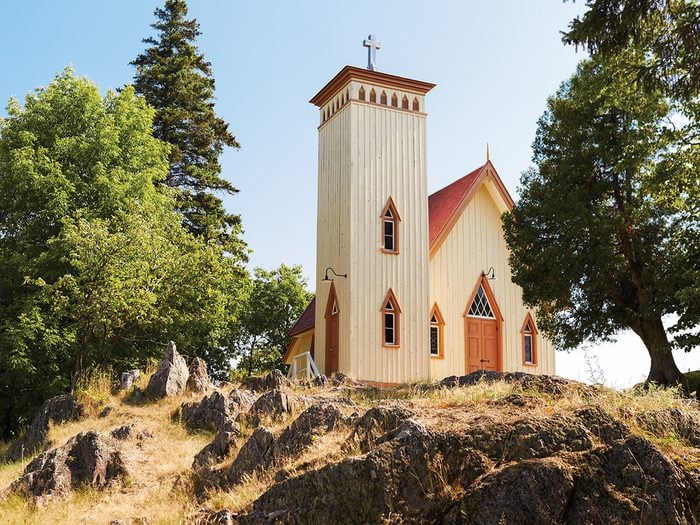
Grosse Île and the Irish Memorial National Historic Site
Grosse Île, Quebec
Just three kilometres long and one kilometre wide, this island in the middle of the St. Lawrence River was once the main gateway into Canada for more than four million immigrants. From 1832 to 1937, Grosse Île served as a quarantine station for the port of Quebec in an effort to prevent the spread of infectious diseases. In the mid-19th-century, an influx of Irish immigrants arrived on the island as a result of the Great Potato Famine. The Grosse Île Memorial, which was unveiled in 1998, honours the thousands of immigrants and station staff who died there.
Pro tip: Join the interpretative walking trail for a deeper dive into the stories of the residents’ lives, passing by historical landmarks such as the Celtic Cross and Irish cemetery.
Discover 10 more places in Canada every Canadian should visit.
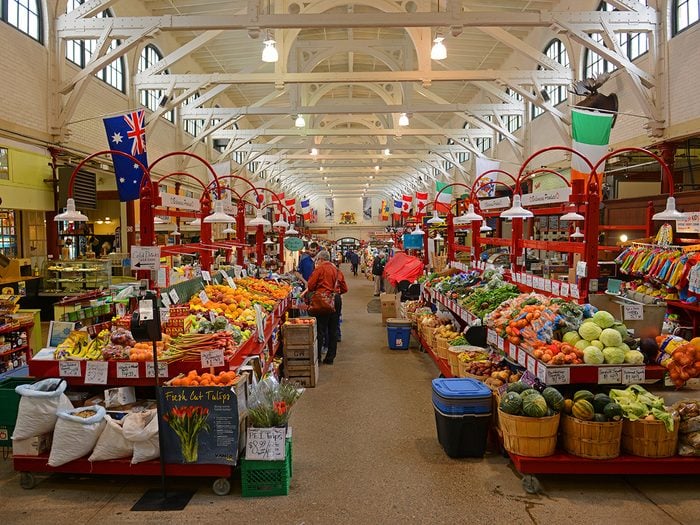
Saint John City Market
Saint John, New Brunswick
A visit to the Saint John City Market is like stepping back in time. Built between 1874 and 1876, it’s Canada oldest continuously operating farmers’ market—that almost wasn’t. The building narrowly escaped the Great Saint John Fire of 1877, which destroyed two-fifths of the city. Designed by New Brunswick architects McKean and Fairweather in the Second Empire style—marked by lavish details like a classically designed cornice and decorative iron gates—it’s a rare surviving example of a 19th-century building designed specifically as a market. It was designated a National Historic Site in 1986.
Pro tip: The market’s unique roof—which resembles an inverted keel of a ship—is a homage to Saint John’s rich ship-building history.
Check out 10 must-visit farmers’ markets across Canada.
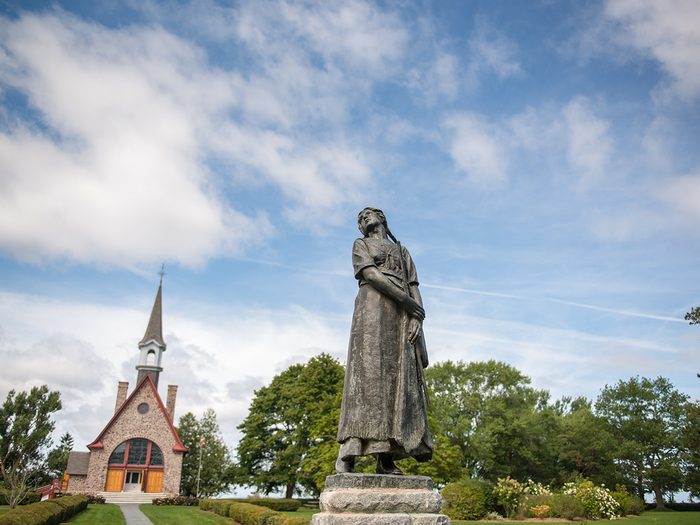
Grand-Pré National Historic Site
Grand-Pré, Nova Scotia
Discover the stories of the Acadian people within the 1,300-hectares of farm fields, marshes and dykelands at this UNESCO World Heritage Site. Steeped in history, the Grand-Pré National Historic Site commemorates Acadian settlement from 1682 to 1755, including Le Grand Dérangement in the following decade during which they were deported by the British. For many of the Acadian diaspora, this area stands as a memorial to their heritage and culture. Visitors around the world have also flocked here to see the statue of Evangeline, the heroine of Henry Wadsworth’s famous poem “Evangeline: A Tale of Acadie,” based on the events of the deportation. You can take in all of these historical landmarks by following a route known as the Evangeline Trail.
Pro tip: Fully immerse yourself in the park’s splendid landscape by spending the night in one of Parks Canada’s recently installed oTENTik accommodations, which hold up to six people. Part tent, part rustic cabin, this is a one-of-a-kind camping experience on a historic site.
For more travel inspiration, check out this gorgeous gallery of Nova Scotia photography.
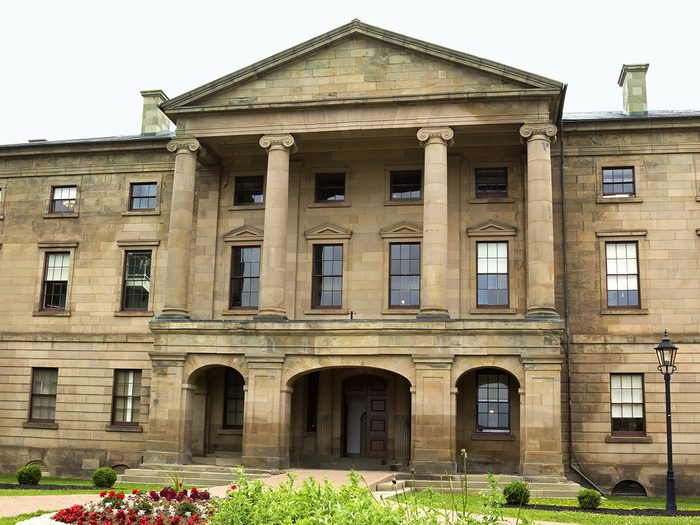
Province House National Historic Site
Charlottetown, P.E.I.
Even if you haven’t heard of this historical landmark before, you’re probably familiar with the events that took place here more than 150 years ago. In 1864, representatives from the British North America colonies met inside Province House for the Charlottetown Conference, unaware that their discussions would ultimately lead to the Confederation of Canada. Built from Maritime sandstone in the neo-classical style, it became the seat of the provincial legislature, and remains one of the world’s oldest parliamentary buildings still in-use.
Pro tip: Head next door to the Confederation Centre of the Arts to learn more about Province House’s pivotal role in Canadian history. Along with original artifacts, the exhibit also boasts a replica of the Confederation Chamber.
Here’s the most famous house in every province.
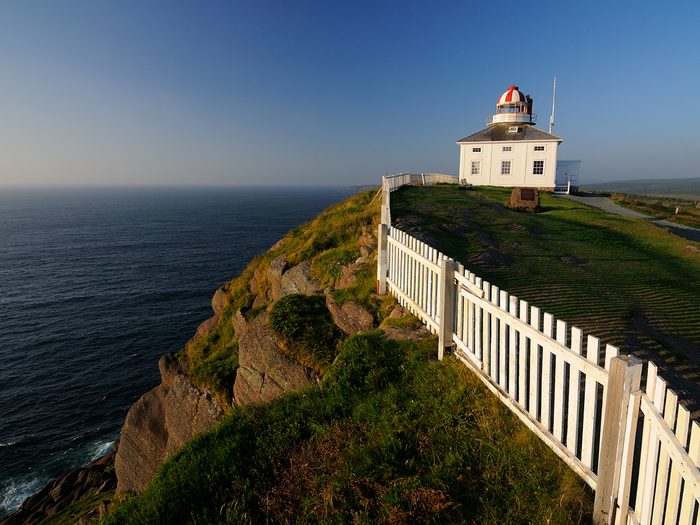
Cape Spear Lighthouse National Historic Site
St. John’s, Newfoundland
Perched atop a steep cliff at North America’s easternmost point is Newfoundland’s oldest surviving lighthouse. Constructed in 1836, the red and white beacon was a vital landmark for mariners navigating the turbulent iceberg-filled waters of the Atlantic Ocean. For 150 years, it was maintained by several generations of the Cantwells family. After being restored by Parks Canada, the Cape Spear Lighthouse National Historic Site was officially opened to the public in 1983 by the Prince and Princess of Wales, Charles and Diana. Today, the lighthouse offers a glimpse into the lives of 19th-century light keepers and their families in Cape Spear—you can even try your hand at authentic Victorian chores like candle-making and rope splicing.
Pro tip: During the Second World War, members of the Royal Canadian Artillery and American forces were based at nearby Fort Cape Spear. You can still explore remnants of the coastal defence battery, including the bunkers and gun emplacements.
Discover more essential experiences on the east coast of Canada.